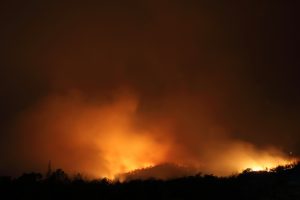With the House Appropriations Committee’s approval of a bill that includes $1.5 million in funding for issues related to smoke exposure in winegrapes, researchers will have a better opportunity to understand the problem. The committee approved the fiscal year 2020 Agriculture, Rural Development, Food and Drug Administration, and Related Agencies bill by a vote of 29 to 21. California Association of Winegrape Growers President (CAWG) John Aguirre expressed appreciation for the understanding that research of this kind is necessary but noted that more funding will be needed to adequately address the issue.
“The good news is at least we did get that amount out of the House and that represents really a statement that it is a priority that deserves funding,” Aguirre said. “Now it’s the job of industry to go to the Senate and ask senators to move that number up from $1.5 million to the $5 million that we originally asked for.”
Wineries can be very particular about the types of winegrapes they use in the winemaking process. The amount of smoke created over the past few years of wildfires, particularly in the summer of 2018, has created significant concern in the industry as to what effect that has had on grape quality. The issue comes down to the lack of scientific understanding of exactly how exposure to smoke can affect winegrapes.
“We need to understand what compounds would one test for, what levels do these smoke compounds cause problems, how can they be reduced or eliminated through practices in the vineyard during winemaking,” Aguirre noted. “So many, many questions need to be addressed.”
CAWG and several other industry organizations will continue their efforts to increase funding aimed at answering smoke related questions. “Wine industry groups in Oregon and Washington are keenly interested in seeing more research funded to study smoke exposure,” Aguirre noted. “And I should add that it’s not just west coast United States, it’s Europe, it’s Australia. So, it really goes beyond our shores.”











